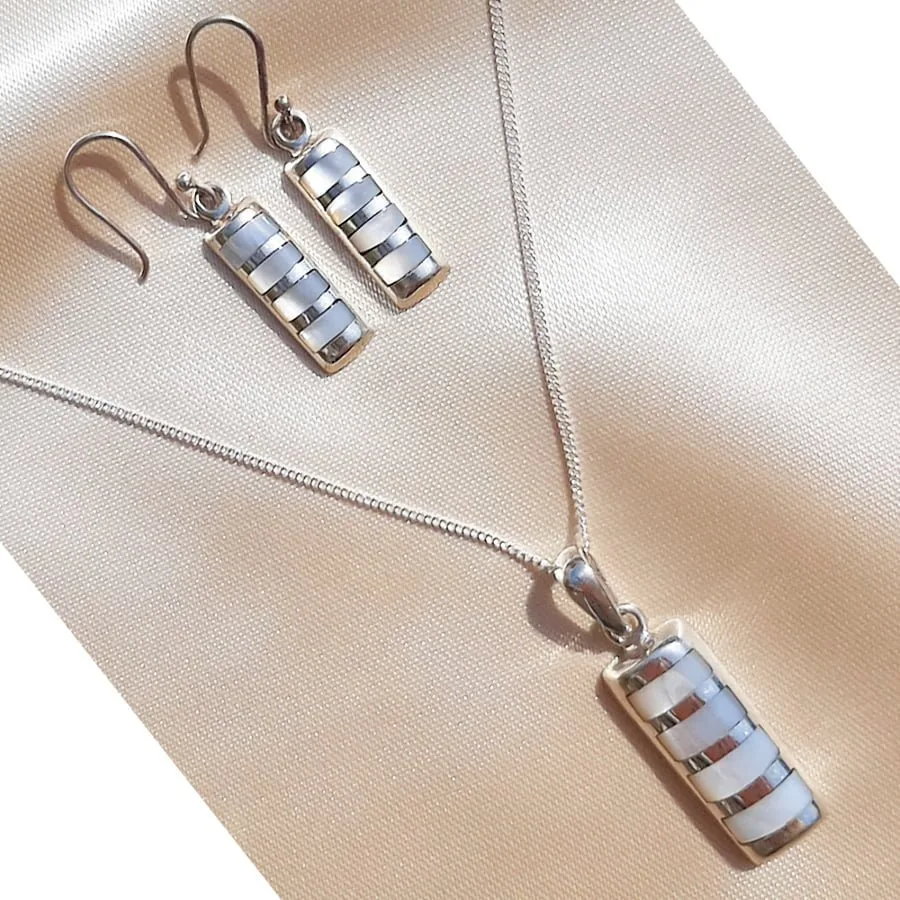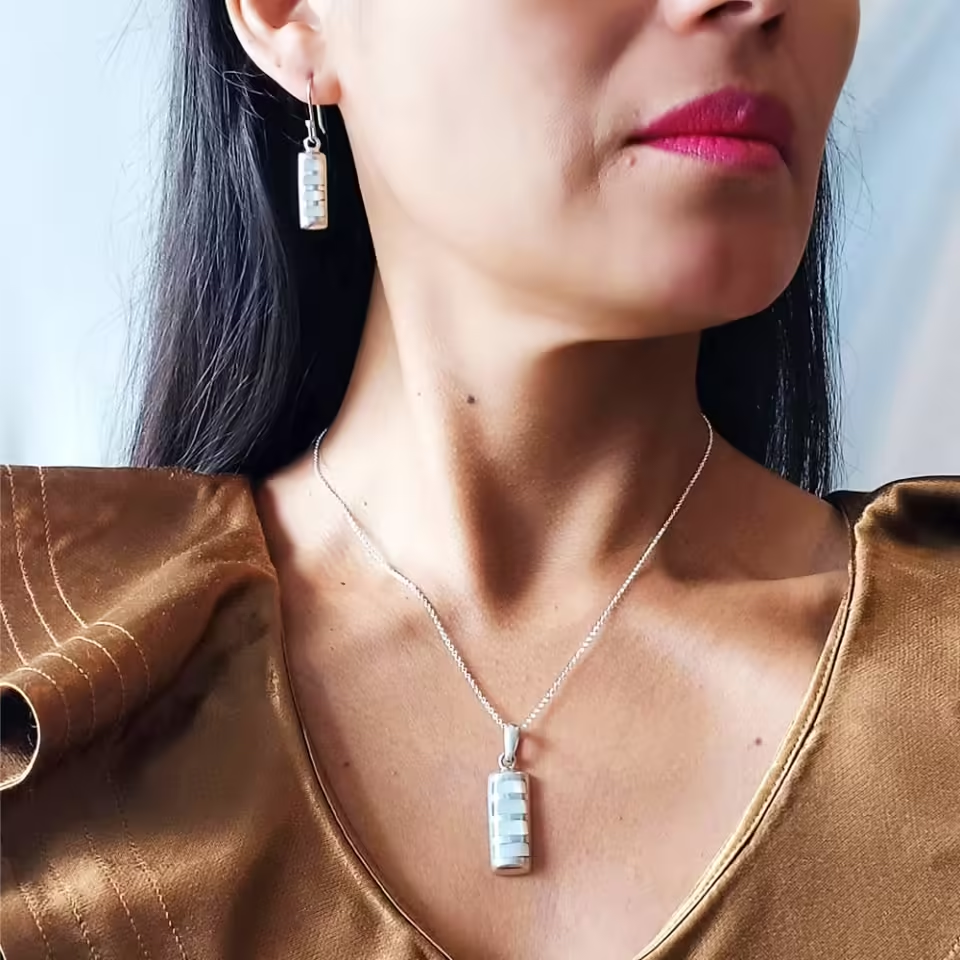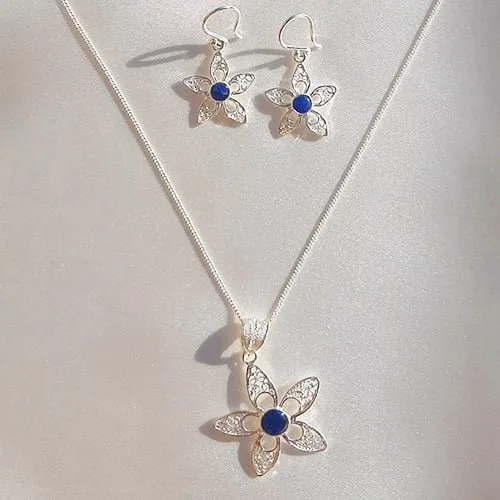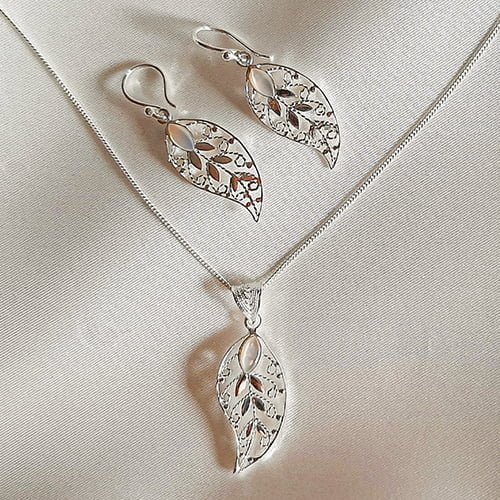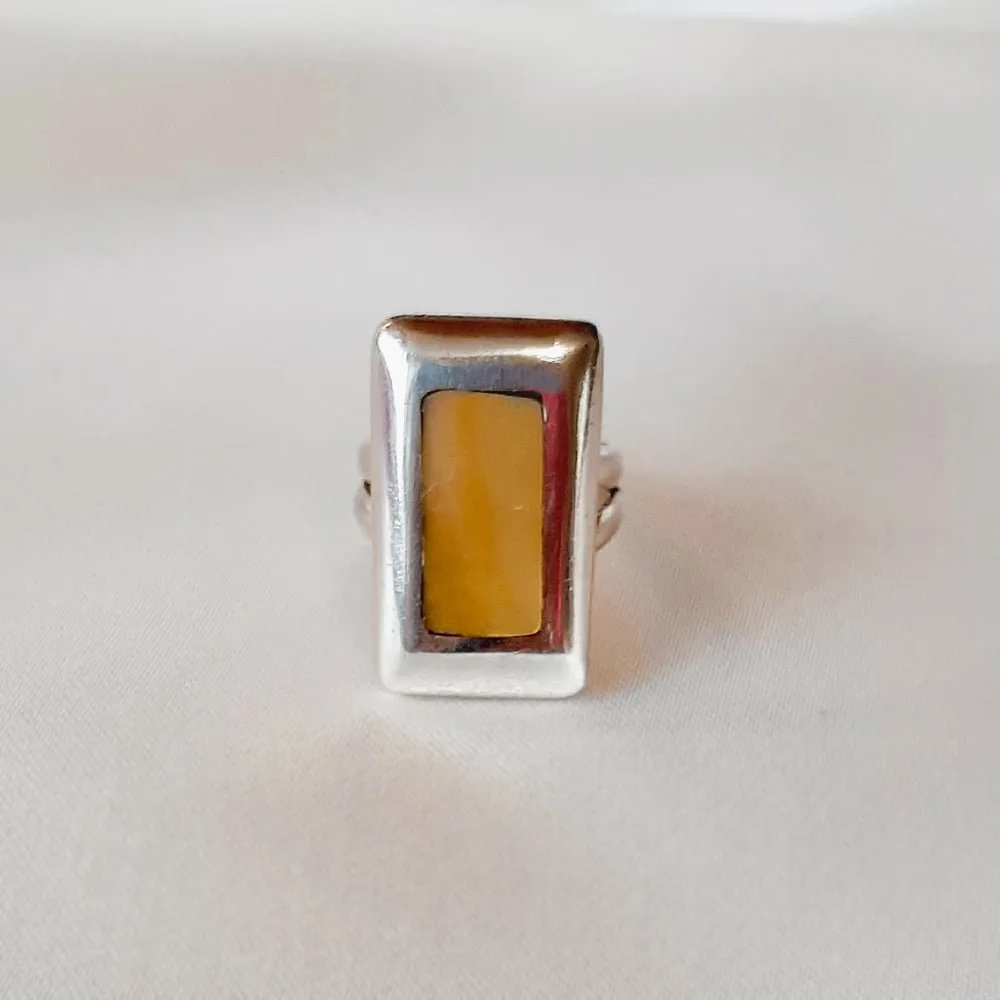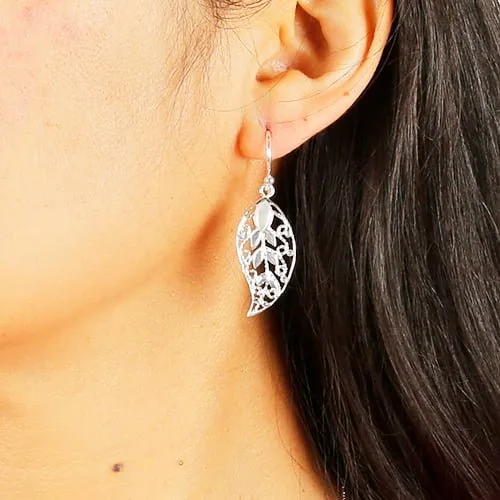original piece of jewelry
Showing 109–120 of 125 resultsSorted by popularity
Kipu Mother Pearl Set of Pendant and Earrings
The Quipu, or khipu, was used by the Incas and Andean cultures to record and convey information. This ingenious device, without a written language, utilized colors, strings, and knots at different heights to record various data, including dates, statistics, accounts, and even abstract folk stories and poetry.
Glowing Rose Set of pendant and earrings
Roses can be an amazing way to say everything from “I love you” to “I value your friendship”, to “congratulations”.
- Set does not include chain or necklace
Daisy Flower & Lapis lazuli Filigree Set of pendant and earrings
The daisy symbolizes motherhood, childbirth, and love. Lapis lazuli is a spiritual stone associated with truth, friendship, and harmony in relationships. It enhances awareness and judgment, deepening connections.
Hope Leaf & Nacre (Filigree) Set of pendant and earrings
Leaves mean many things in different cultures, but the most common symbolism they are used for are related to fertility, hope, abundance, growth, peace, victory, death, and rebirth. With mother pearl stone.
Kipu Mother Pearl Earrings
The Quipu, or khipu, was used by the Incas and Andean cultures to record and convey information. This ingenious device, without a written language, utilized colors, strings, and knots at different heights to record various data, including dates, statistics, accounts, and even abstract folk stories and poetry.
Queen’s Crown Earrings
Crowns are mainly symbols of royalty. They’re worn to symbolize the absolute authority of the wearer. But crown symbolism runs deeper, too. They’ve historically represented everything from victory in battle to the divine immortality of the wearer.




